SciArt profile: Diego Galagovsky
Posted by the Node, on 17 January 2022
In our first SciArt profile of 2022, we hear from Diego Galagovsky, a postdoc with a passion for using cartoons to communicate science.
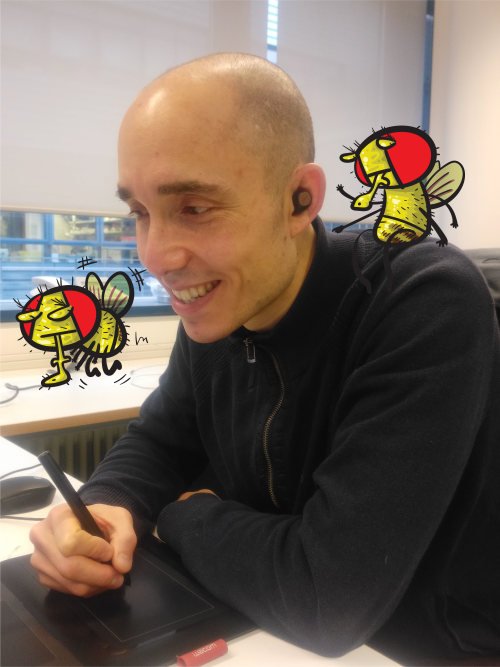
Where are you originally from and what do you work on now?
I am originally from Salta, Argentina. After moving to Buenos Aires for my PhD, then Dijon, France for a postdoc, I now live in Jena, Germany where I am working on a second postdoc.
Were you always going to be a scientist?
Since I was very young, I have been curious and interested in understanding how things work. As far as I remember, I got interested in dinosaurs when I was 4 or 5 years old and that became the gateway into science. I started reading books, increasing in complexity and getting interested in all areas of science, reading about animals, ecology, evolution, anthropology and history, physics and astronomy. In school and later in high school, I adored all classes linked to science, and especially biology. And as a kid I would always say that I wanted to be a scientist.
And what about art – have you always enjoyed it?
At the same time, I always enjoyed artistic expression. As a kid I took crafts classes and learned the basics for drawing. It was fun. I was always combining it with my love for science, drawing animals, dinosaurs and planets. I also loved cartoons and learned to draw by copying my favourite characters. Later, I became interested in comic books and started trying to emulate the style and make my own.
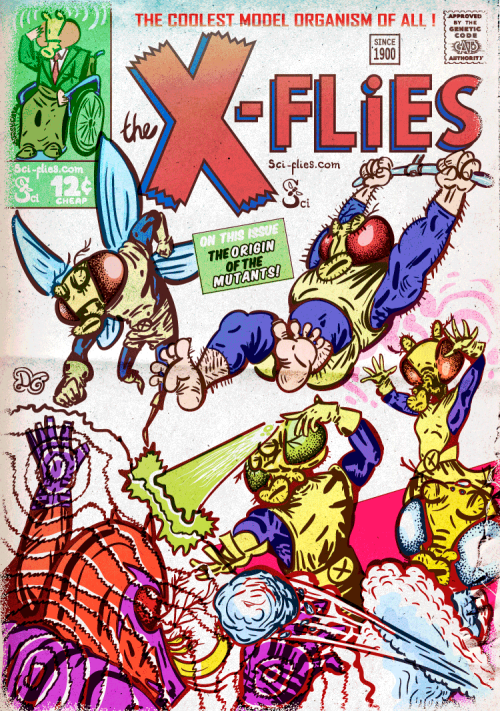
I like X-Men comics a lot. For an article about mutations, I did this homage to the cover of 1961 X-Men #1. I liked the characters and would love to continue using them for more articles.
What or who are your most important artistic influences?
My love for cartoons and comic books has had the greatest impact on my style. I take a lot of my inspiration from cartoons I loved throughout my life and from my favourite comic books. I also like visual arts and design in general, so I try to mix in whatever I find nice and appealing. My main interest is in experimenting and learning something new every time I decide to make a drawing.
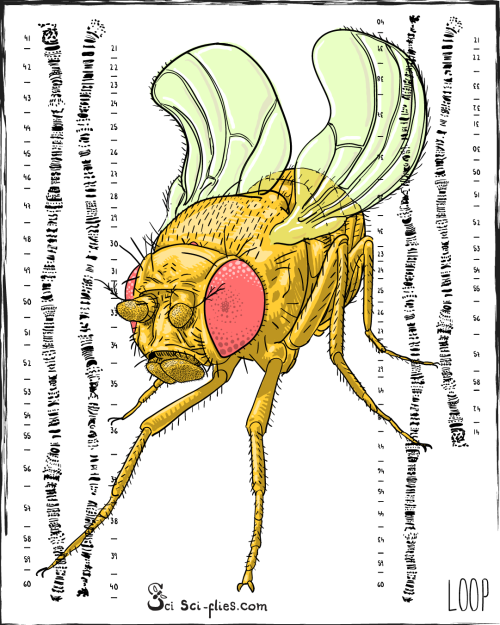
I participated in Inktober 2021. It was an excuse to work hard on drawing and try new things. Here I paid tribute to a beloved fly line, the Curly-O balancer line. Balancer lines have rearranged chromosomes which I depict here next to the fly.
How do you make your art?
I work mainly digitally. I like the results I obtain, and I also find it comfortable because I can work almost anywhere, it takes up little space and allows me to work on several projects at the same time. I have been interested in digital art since I was very little. As a kid I never had access to fancy software or someone to teach me. I remember using basic software and pushing it as far as I could. With the popularization of the internet, I finally started learning to use more professional software design. I learned enough to then start self-teaching and experimenting. Regarding the process of my work, it usually involves a lot of thinking until I get the final idea for the subject and the composition. Then as I work it starts evolving and the initial idea starts changing. It is a very rewarding and stimulating process.
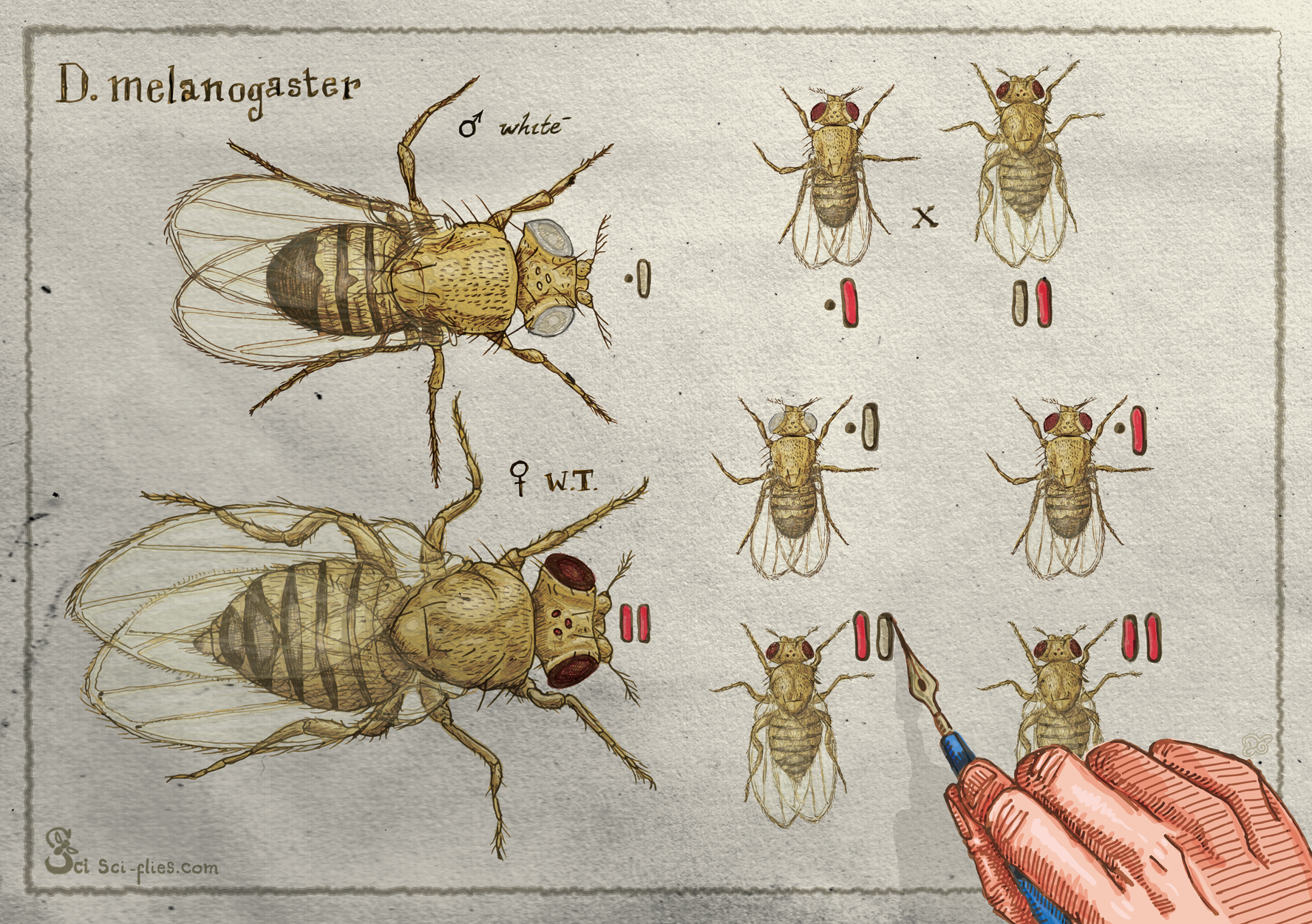
One of the first articles I wrote on our website was about genetics. I wrote about Mendel and Morgan. To illustrate it I drew the crosses Morgan performed with his white-eyed mutant, as if he was drawing them with ink and watercolours.
Does your art influence your science at all, or are they separate worlds?
Now I am working mainly on drawings and illustrations that connect directly to my scientific interests. I am doing works that are aimed at not only being aesthetically pleasing but also educational. I want them to be interesting enough to attract people to learn about science.
My art also influences my science in the sense that it has helped me better communicate my projects and my results. I like visual storytelling and understanding this language has helped me a lot with the communication aspect of my scientific work. I’ve also done figures and graphical abstracts for others in which I infused a bit of the artistic interests I had at the time.
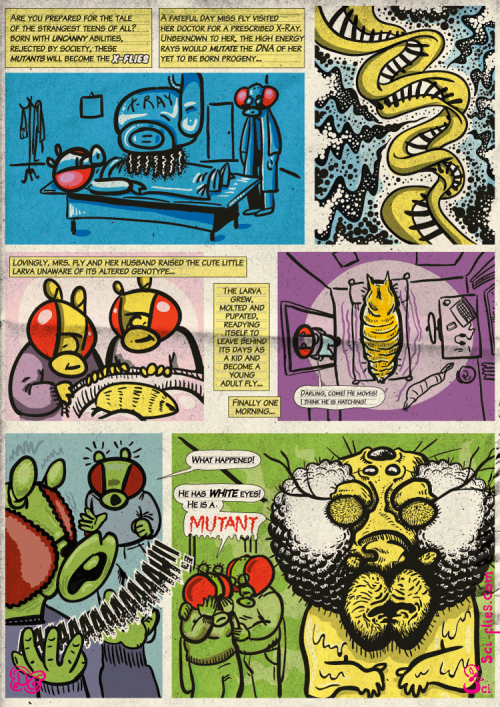
On our website, we did an article about mutations and I illustrated the use of x-rays to generate mutations in the style of horror/super-hero over-the-top origin story comic books.
What are you thinking of working on next?
I have been working on projects that involved thinking fast and working on a short schedule. As part of trying to work on science education and dissemination, I have been trying to take on challenges online that involve producing drawings every day, like Inktober or now an Advent Calendar featuring Drosophila flies and the science we do with them. I have also made a sticker app for WhatsApp with the same objective, and now I plan to explore that further: can we use stickers to interest people in science? Next, I want to experiment with the visual storytelling format of comic books, and how to use it to tell science online in a more engaging way. I have many ideas I want to explore in those areas.
You can find Diego on Twitter, Instagram and Facebook as well as his website: sci-flies.com
Thanks to Diego and all the other SciArtists we have featured so far. You can find the full list here. We’re always on the lookout for new people to feature in this series – whatever kind of art you do, from sculpture to embroidery to music to drawing, if you want to share it with the community just email thenode@biologists.com (nominations are also welcome!)


 (7 votes)
(7 votes)